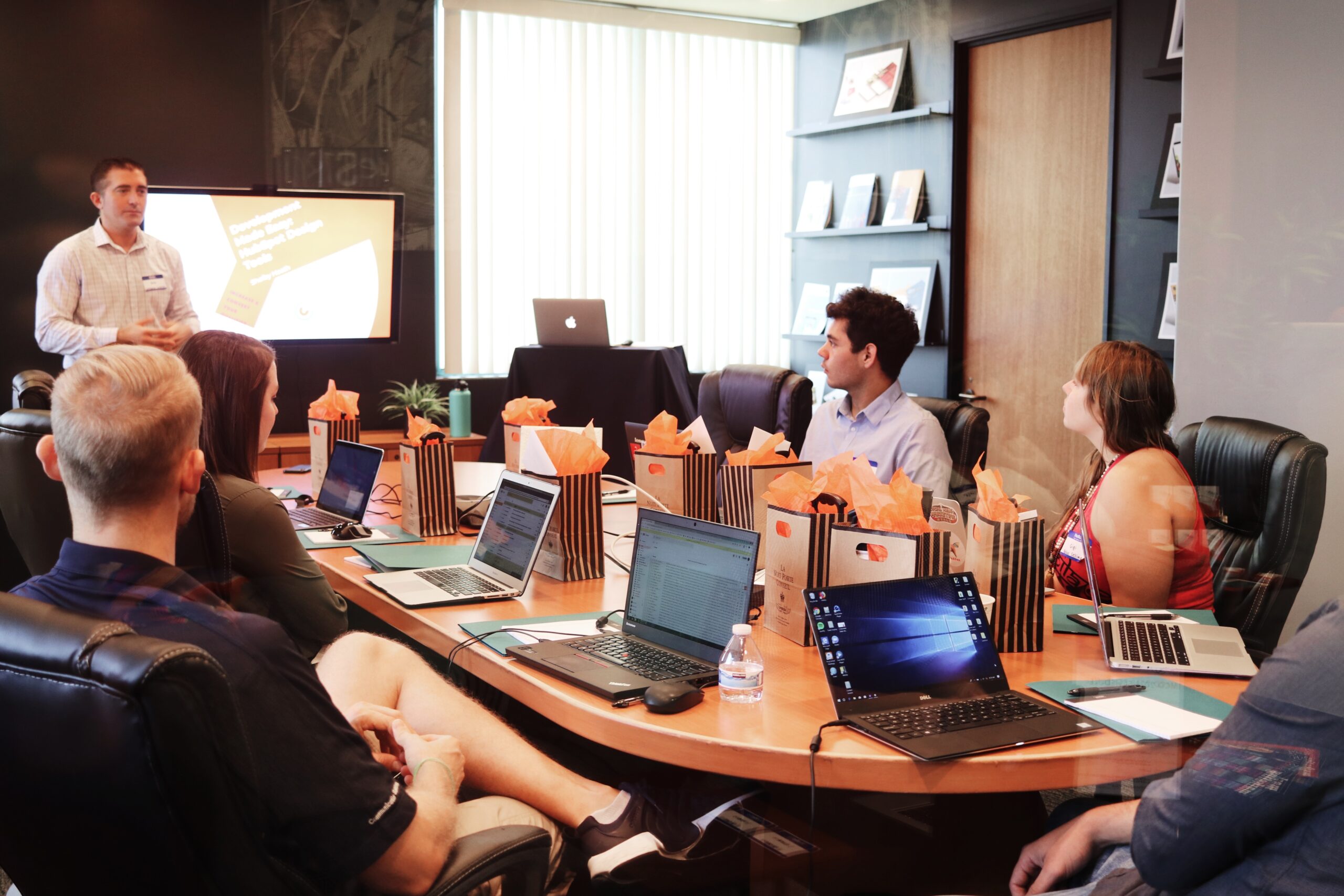
Preparing for a Performance Review in the Tech Industry
How to Prepare for a Performance Review if You Work in Tech
Performance reviews can be tricky for everyone involved. Just as you might be nervous about showcasing your achievements in a tech company, your manager may be anxious about structuring the review. However, performance reviews are also beneficial.
They’re a chance to demonstrate your value to your employer with facts, figures, and reminders of your behaviours, which could pave the way for new opportunities in the future. They ensure you can ask questions about the direction of the business and your place in it.
Plus, they’re one of the best ways to gather valuable feedback, something 92% of employees say they want more of regularly. While feeling nervous about your performance review is perfectly normal, the right strategy can help to alleviate your concerns.
Here are several strategies to help you ace your next performance review, and how to prepare for a performance review if you work in tech.
.
1. Understand the Purpose of the Review
Performance reviews for techies aren’t just box-checking exercises. They’re not there to give your manager a way to highlight poor performance or sing your praises. Instead, performance reviews are designed to help you improve and develop.
86% of employees and executives say inefficient communication and collaboration are the main reasons for workplace failures. Look at your performance review to ensure you and your managers are aligned.
The best performance reviews are two-way conversations, where you and your technical direct report can identify potential areas for improvement. This doesn’t just mean finding ways to improve your performance but looking for opportunities to improve workplace culture.
2. Prepare a List of your Accomplishments.
While performance reviews shouldn’t just revolve around you highlighting everything you’ve delivered in the last year, it’s important to draw attention to your achievements. Highlighting what you’ve done well recently is a great way to demonstrate your value.
Plus, showcasing your successes puts you in an excellent position if you ask for a promotion, more responsibility, or a pay rise. When highlighting achievements, focus on specific and measurable examples relevant to your SaaS or technology company.
If your business is highly focused on growth, you might demonstrate how your work helped to attract and retain new clients, with statistics to back that up. If you know you’re evaluated on your productivity skills, demonstrate how you overcame problems with difficult deadlines.
If you’re struggling to list achievements yourself, speak to your colleagues; they might be able to offer insights into where you’ve been invaluable in the last year.
3. Be Ready to Ask Questions
As mentioned above, performance reviews are two-way conversations. Your manager might have questions to ask about your performance, but you’re likely to have queries about the company and other factors, too.
Look at your work experience over the last year and pinpoint your struggles. If you had difficulty setting smart goals for improvement, you might need more clarity on your company’s goals and how your performance will be evaluated.
If you’ve noticed you’re not making as much progress as you’d like in a specific area, ask your manager what development and training opportunities might be available. You could ask for an insight into how the vision or mission of the business is changing.
This demonstrates a commitment to serving your tech company effectively and ensuring you can hold yourself accountable with the right KPIs and metrics going forward.
4. Consider Your Goals
Sometimes, a performance review is an excellent opportunity to think about your overall career path and progress toward your targets. It’s also a time to assess your future with a SaaS company and determine your “next steps”.
Think about what you’ve accomplished in the last year and what you’d like to achieve in the years ahead. What will your manager or supervisor need to do to help you reach your targets? Do you need to request more training or instruction, more responsibilities, and opportunities?
Would you make a greater impact on the business if you were in a position of power, or are you interested in getting a promotion? You might not get the things you ask for from your manager immediately, but starting the conversation is key.
Now that technology skill shortages are greater than ever, this could be the perfect time to tell your manager what can help them retain your skills.
5. Know How to Respond to Feedback
A big part of any performance review is feedback. You get to share your insights with your manager about improving the workplace. At the same time, they can provide insights into what you’re doing well and what talents you need to work on.
Approaching this conversation with the right mindset is crucial. Remember that no matter how successful you were in the last year, you may still receive some negative feedback. Responding to this commentary professionally will help to preserve your relationship with your manager.
A good way to get started is to anticipate the feedback you might get. Think about the areas where you believe you can improve and develop your strategies to tackle these areas. Responding to negative feedback with suggestions is a great way to show your manager how committed you are to your role.
When your managers share developmental feedback, listen carefully to their input. Avoid getting defensive or flustered, thank them for their feedback, and work with them collaboratively to find a solution.
Your Quick Checklist for Performance Reviews
Following the suggestions above should ensure you can leave your performance review feeling informed, satisfied, and recognised. However, a few extra ideas can also help you prepare for this crucial conversation. Here’s a quick checklist to help:
- Do your homework: Collect as much information as possible before the review. Create a list of your accomplishments and pinpoint your development areas. Find out how the company has changed in the last year and refresh your knowledge of your job description.
- Preparation is key for a good tech performance review. Alongside doing your research, it’s worth planning intelligent responses to questions and preparing facts and figures for your presentations. Make sure you know which questions to ask, too.
- Steel yourself: Approach each performance review with a growth mindset. Stay calm, even if you receive negative feedback, and look at failures as an opportunity for growth. Losing your temper or responding defensively could lead to problems in the future.
- Review your future goals: Understanding what you want to accomplish in the years ahead will help you make the right requests when meeting with your manager. Even if you’re not ready to request a promotion, you can discuss how to start moving forward.
Performance reviews can be daunting but can also be an important step in any career. Approach each review with the right mindset, and you could find the feedback you receive helps to propel you towards your career goals.
I hope you found our blog insightful on How to Prepare for a Performance Review if you work in Tech and that you can now approach your next performance review well-armed.
Opus Resourcing recruits world-class SaaS, technology, commercial and executive talent for companies ranging from seed-stage start-ups to Fortune 500 companies within the UK, Europe, and the US.
For more information and expertise on this matter get in touch by calling us on 01580 857179 or send us an email here.








